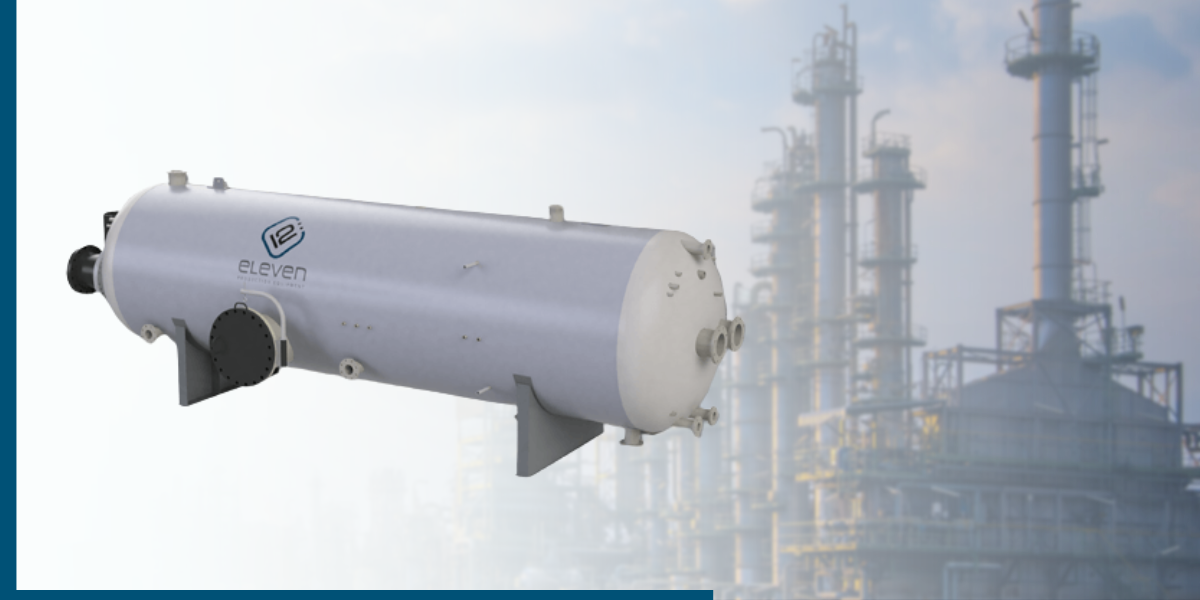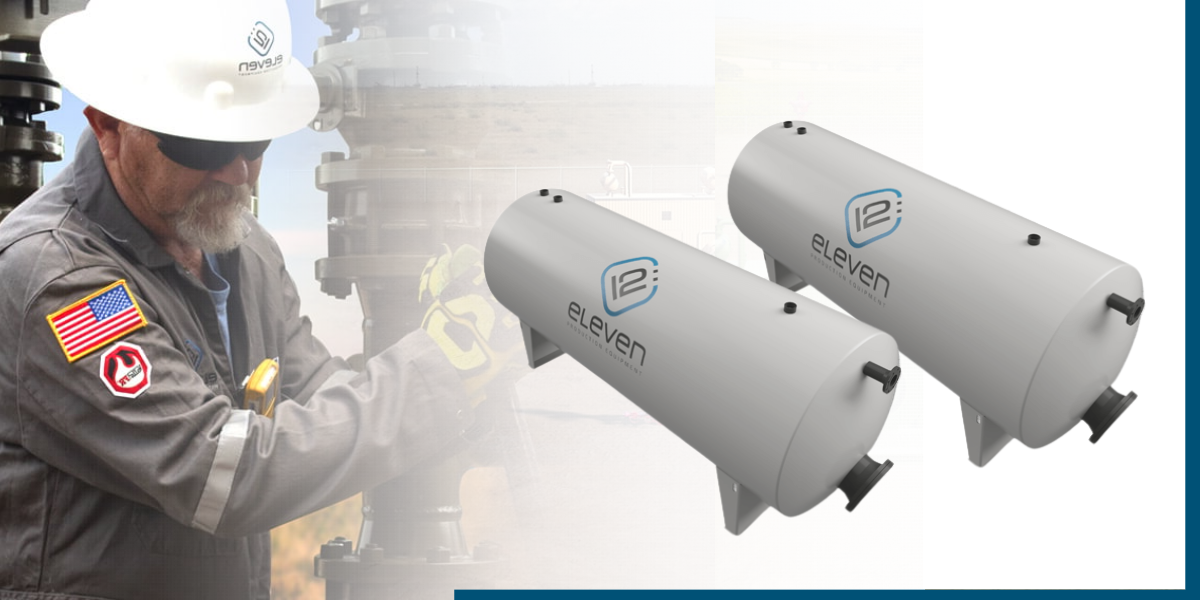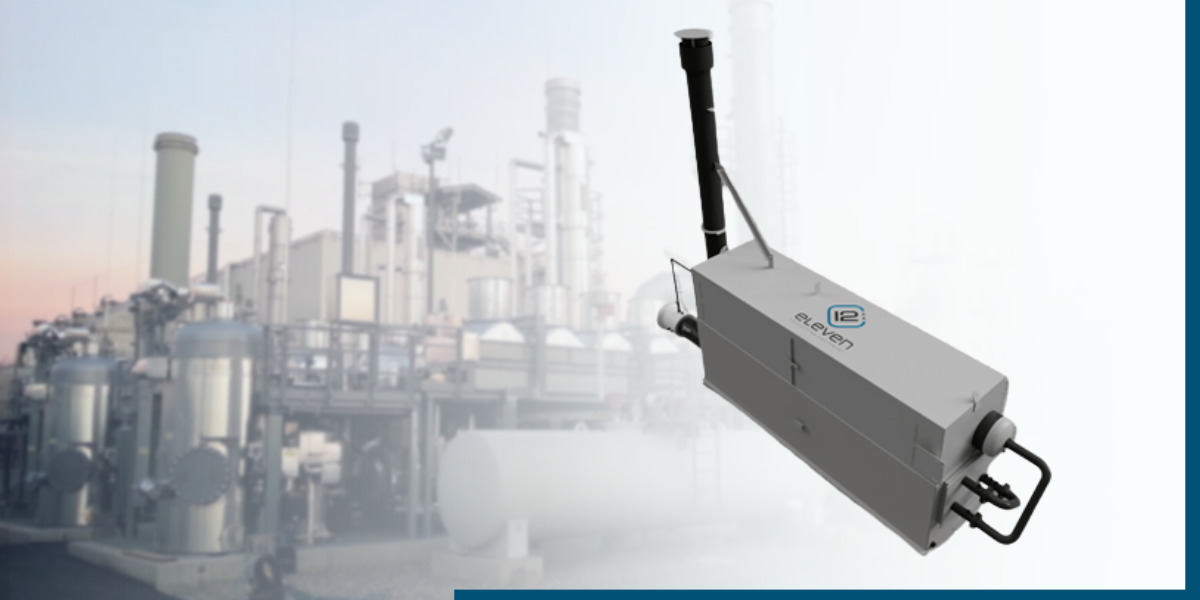Free Water Knockout (FWKO): What You Need To Know
Free water knockouts (FWKO) are an essential component in the oil and gas industry, designed to remove any free water present in the production...

The oil and gas industry is vital to the global economy, supplying essential energy resources to various sectors. A critical component of this industry is the process of treating oil and gas to meet strict quality standards before sale or transport. This is where oil and gas treaters come in, playing a pivotal role in the overall production process.
This blog post delves into the world of oil and gas treaters, exploring their function, how they work, the benefits of using them, and other relevant information.

Oil and gas treaters are specialized equipment used to separate water, gas, and other impurities from crude oil during the production process. These contaminants must be removed to meet industry standards and specifications, ensuring the final product's quality, safety, and compliance with environmental regulations. Treaters play a crucial role in maximizing the value of produced oil and gas, optimizing the efficiency of production operations, and minimizing environmental impacts.
There are several types of oil and gas treaters, each utilizing different technologies and methods to remove contaminants from crude oil. Two of the most common types are electrostatic treaters and heater treaters. While both are designed to separate contaminants from the oil, they operate on distinct principles.
Electrostatic treaters employ an electric field to separate water, gas, and other impurities from crude oil. The oil and water mixture enters the treater, where it is subjected to an electrical field generated by high-voltage electrodes. The electric field causes water droplets to coalesce and form larger droplets, which then settle to the bottom of the treater due to gravity. At the same time, gas is separated and rises to the top, leaving a layer of clean oil in the middle. The separated water and gas are then removed, and the treated oil is ready for further processing or sale.
Heater treaters, on the other hand, use heat to separate water and other contaminants from crude oil. As the name suggests, a heater treater heats the oil and water mixture, causing the water to vaporize and rise to the top of the vessel. Meanwhile, any remaining impurities, such as solid particles, settle to the bottom. The clean oil layer in the middle is then extracted, while the water vapor and impurities are removed separately.
The use of oil and gas treaters brings several benefits to the oil and gas industry, including:
Treaters effectively remove contaminants, ensuring that the final product meets or exceeds industry standards and specifications. By providing a cleaner, higher-quality product, treaters help companies maintain a strong reputation and command higher prices in the market.
By optimizing the separation of water, gas, and other impurities, treaters allow for more efficient downstream processing and reduced equipment fouling. This leads to increased productivity and reduced downtime, allowing companies to maximize their overall production levels and generate higher revenues.
Effective treatment of oil and gas not only enhances the quality of the final product but also helps minimize the environmental impact of the production process. By removing contaminants such as water and solid particles, treaters reduce the volume of waste produced and the likelihood of environmental damage. In addition, separated water and gas can often be reused or repurposed, further contributing to the industry's sustainability efforts.
Choosing the right oil and gas treater is essential for optimizing the treatment process and achieving the desired results. Factors to consider when selecting a treater include the characteristics of the oil and gas being processed, the specific contaminants present, production rates, and space constraints. Consulting with experts or partnering with reputable equipment suppliers can help identify the most suitable treater for a given operation.
Routine maintenance is also critical to ensuring the efficiency and longevity of oil and gas treaters. This includes regular inspections, cleaning, and replacement of worn or damaged components as necessary. Establishing a proactive maintenance schedule and following industry best practices can help minimize equipment downtime, reduce overall operating costs, and ensure the reliable performance of treaters throughout their service life.
In the oil and gas production process, several types of equipment work in tandem to effectively separate and treat crude oil. These include treaters, separators, free water knockouts (FWKOs), and inline heaters. Understanding how these components work together can help optimize production operations and ensure the highest quality output.
Separators are a crucial piece of equipment in oil and gas production, designed to separate gas, oil, and water from the well stream. They are often the first stage in the separation process, using gravity and pressure differences to divide the three phases. The separated gas and oil are typically sent for further processing, while the water is directed to a free water knockout or an oil and gas treater for additional treatment.
Free water knockouts (FWKOs) are used to remove large amounts of water from the well stream before further processing. They rely on gravity to separate the water from the oil, providing an initial treatment step to reduce the water content of the crude oil. Following the FWKO, the oil may be sent to an oil and gas treater for additional treatment to remove smaller water droplets and other impurities.
Inline heaters are used to heat the well stream to facilitate separation and treatment processes. By increasing the temperature of the crude oil, inline heaters reduce the viscosity of the oil and help break down emulsions, making it easier to separate water, gas, and other impurities. Inline heaters can be used in conjunction with other equipment, such as heater treaters, to enhance the efficiency of the treatment process.
In a typical oil and gas production operation, the various pieces of equipment are arranged in a sequential process to maximize separation and treatment efficiency. The well stream is first directed through a separator, which removes the bulk of the gas and divides the oil and water phases. The water may then be sent to an FWKO for additional separation, while the oil is directed to an oil and gas treater to remove residual water and other impurities.
Inline heaters may be employed at various stages throughout this process to enhance separation and treatment efficiency. For example, they may be used to preheat the well stream before it enters a separator, making it easier to separate gas, oil, and water. Similarly, inline heaters can be used in conjunction with heater treaters to improve the efficiency of the treatment process by reducing the viscosity of the oil and breaking down emulsions.
Oil and gas treaters are indispensable to the oil and gas industry, serving to separate water, gas, and other impurities from crude oil and ensure the final product's quality, safety, and compliance with regulations. By leveraging technologies such as electrostatic separation and heating, treaters offer a range of benefits, including improved product quality, increased efficiency and productivity, and reduced environmental impact.
The proper selection and maintenance of treaters are crucial for optimizing their performance and maximizing their benefits in the oil and gas production process.
By understanding the roles of treaters, separators, FWKOs, and inline heaters and how they work together, operators can optimize their production operations and ensure the highest quality output.
When it comes to providing high-quality, reliable, and efficient treater solutions for industrial use, 12:eleven is a leading provider in the oil and gas industry. With years of experience and a commitment to innovation, 12:eleven offers a wide range of oil and gas treater equipment designed to meet the diverse needs of clients across the sector.
We invite you to request a quote for our products or services.
The Importance of ESG in the Oil and Gas Industry - Let's take a closer look at ESG in the oil and gas industry, and discuss how recent orders by the Biden administration have affected the scene.
Oil and Gas Production and Process Equipment - In this blog post we will dive into the most important pieces of oil and gas production equipment. We will also talk about how to maintain them properly.
As a specialty company providing custom design, engineering and fabrication of production and process equipment, we are dedicated to doing what’s right for our customers and passionate about creating value on every project.
We leverage the field expertise of our design and engineering group together with our diversified manufacturing capabilities to deliver a broad range of innovative surface production equipment - including Separators, Treaters, Free Water Knock Outs, Bulk and Test Packages, Indirect Line Heaters, Gas Production Units, Gas Dehydration Units, Glycol Contact Towers, Vapor Recovery Towers, Oil Stabilizing Towers.

Free water knockouts (FWKO) are an essential component in the oil and gas industry, designed to remove any free water present in the production...

Gas Production Units (GPUs) are a crucial component of the oil and gas industry. They play a significant role in the extraction, processing, and...

Piping modules and spools are an important part of any piping system. They help to keep the fluid in the system moving by providing a path for it to...